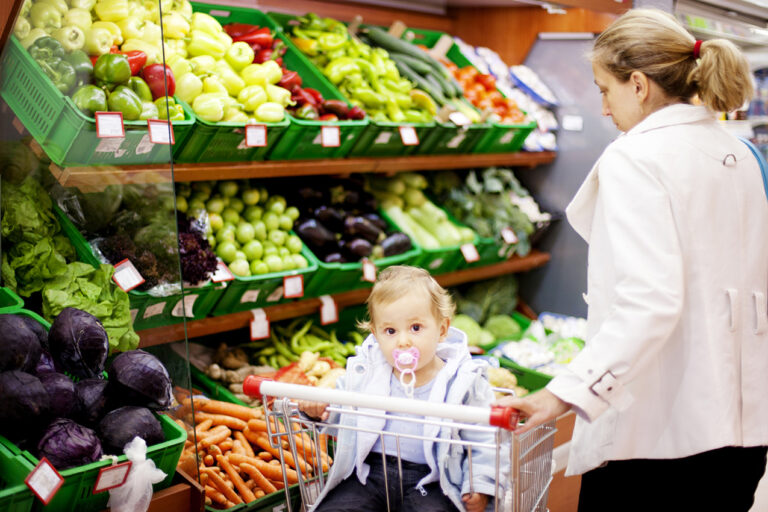- CalFresh is the state’s largest food assistance program.
The Supplemental Nutrition Assistance Program (SNAP)—called CalFresh in California and sometimes known as food stamps—is the largest food assistance program in the nation. Together with school meals and WIC, CalFresh provides a nutrition safety net for low-income Californians. Between January and March 2020, before the coronavirus pandemic prompted shelter-in-place orders, an average of 4.1 million Californians living in 2.2 million households received CalFresh benefits, with each individual receiving an average of $123 monthly. By June 2020, 4.8 million Californians in 2.6 million households received CalFresh benefits, and each participant received an average of $166 monthly. California has a small state-funded program ($50 million for state fiscal year 2018–19) to assist green card holders ineligible for federal benefits. - During the pandemic, federal and state changes expanded access.
The federal Family First Coronavirus Response Act (FFCRA), passed in March 2020, preserved and expanded access in key ways. First, the FFCRA temporarily suspended time-limited benefits for certain adults ages 18 to 49 without dependents. Second, emergency supplementary benefits were expanded to the maximum for families previously receiving smaller amounts. Further, California was federally approved to launch a pilot that enables CalFresh households to buy groceries online from certain retailers. The state was also able to waive, or extend timeframes for, some paperwork and interview requirements. However, in contrast to the last recession, benefits have not to date been increased for all families, and certain state waiver requests—for example, to relax requirements that limit access for postsecondary students—were denied. - The federal government underwrites most benefits.
In addition to funding most of CalFresh, the federal government determines how benefits change with household incomes and sets other key rules. The state determines some aspects of eligibility and oversees county administration of the program. After allowed deductions for certain expenses such as housing and child care, families must have income under 100% of the federal poverty line to qualify. In 2020, this translated to an annual adjusted income of about $26,000 for a family of four. Unlike many safety net programs, CalFresh does not only target families with children; households with no children made up more than half of all participating households in 2018. - CalFresh lowers poverty and supports local economies.
CalFresh plays an important role in mitigating poverty in California. Without the program, nearly 700,000 additional Californians would be in poverty. CalFresh also serves as a fiscal stimulus to the economy: low-income individuals tend to spend their benefits quickly and use the cash freed up by their benefits on other essentials. A recent national analysis finds that a $1 billion increase in SNAP benefits would raise GDP by $1.54 billion during recessions.
CalFresh moves nearly 700,000 Californians out of poverty
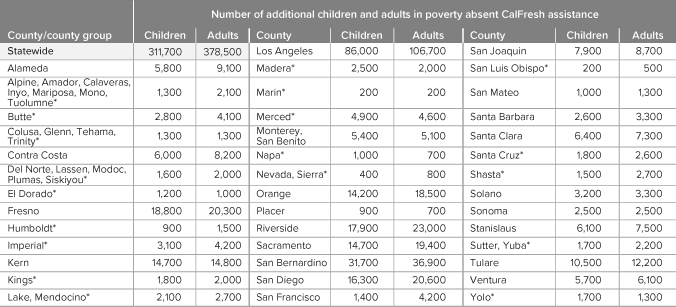
SOURCE: California Poverty Measure (CPM) data for 2016–18.
NOTES: Numbers are rounded to the nearest 100 and indicate those with family resources under the CPM poverty line if CalFresh is excluded from the calculation. Counties whose poverty rates cannot be calculated individually are grouped. Asterisks (*) indicate counties with fewer than 2,000 children in the sample. All estimates are subject to uncertainty due to sampling variability; uncertainty is greater for less-populous counties and county groups because of smaller sample sizes. Children are age 0‒17 and adults are 18 or older. All family members (not just direct recipients) are assumed to share resources from CalFresh and other sources. For more about the CPM, see our poverty fact sheet. For more county-level information and for poverty rates by state assembly, state senate, and federal congressional districts, see our interactive maps.
- CalFresh participants reflect the state’s diversity.
The share of eligible Californians who participate in CalFresh has been growing. In 2018, 71% of eligible Californians accessed benefits. California’s shares of naturalized citizens (19%), refugees (15%), and other noncitizens (15%) participating in CalFresh are among the highest nationwide, reflecting the state’s large immigrant population as well as its racial/ethnic diversity. Revisions to the public charge rule, which may deter immigrants from using benefits for which they are eligible, would have an outsize effect in California; implementation of the rule has been subject to legal proceedings. Regionally, participation rates are higher (over 90%) in inland counties such as Fresno, San Bernardino, and Tulare, while Bay Area counties tend to have lower rates, although the range is wide (37% to 96%). In Los Angeles County, the largest county in the state, 74% of eligible Californians accessed benefits.
CalFresh participants are racially and ethnically diverse
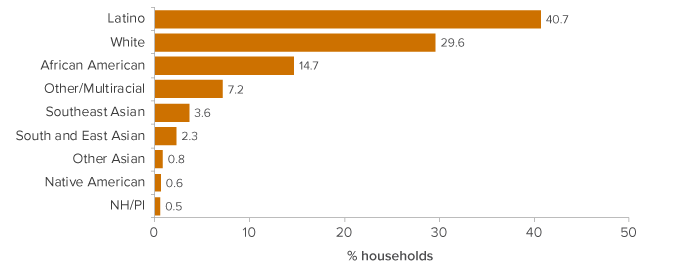
SOURCE: California Department of Social Services, CF 358S and CF 358F.
NOTES: “NH/PI” refers to Native Hawaiian/Pacific Islander. “Southeast Asian” is a combination of the Cambodian, Filipino, Laotian, and Vietnamese categories, and “South and East Asian” is a combination of the Asian Indian, Chinese, Korean, and Japanese categories. Ethnic breakdowns for other racial groups were not available. Percentages based on author calculations from program participation on July 2019. “Other/multiracial” includes 4.6% where case contact’s race was undetermined.
Topics
COVID-19 Health & Safety Net PopulationLearn More
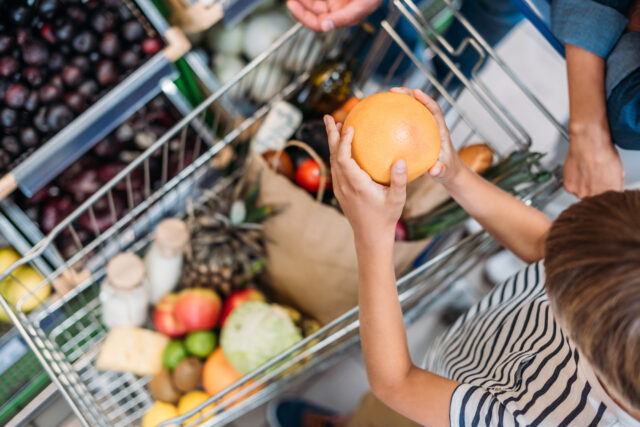
California’s Nutrition Safety Net

Employment Patterns for CalFresh Adults
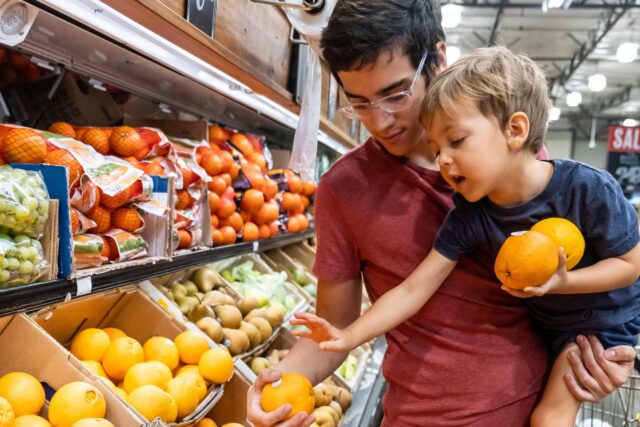
Pandemic-Era CalFresh Expansions Lifted Many Families Out of Poverty

Policy Brief: Tracking CalFresh Participation among Young Children

The Importance of CalFresh and CalWORKs in Children’s Early Years

The Role of CalFresh in Stabilizing Family Incomes


